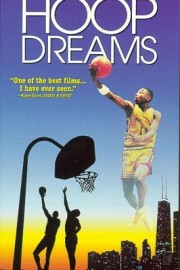Hoop Dreams
Is there anything left to say about “Hoop Dreams” after 20 years that wasn’t said in 1994? The film sent shockwaves through cinema, from it’s debut at the Sundance Film Festival through to when the rules of the Academy’s documentary branch kept it off the ballot, where it would have easily won the Oscar if popular opinion had anything to say about it. Roger Ebert called it, “one of the great moviegoing experiences of my lifetime,” and it was a rare film which topped both his and Gene Siskel’s lists of the best of the year. Now, it is firmly entrenched as one of the great films of all-time, a landmark of the documentary medium. Seriously, what else can be said?
Let’s start with the obvious– this film deserved all the accolades and acclaim it earned. The way the film came together is the stuff of legends: originally, it was intended to be a 30-minute short about how Chicago schools pluck 8th graders off of inner-city playgrounds to play basketball for them. Along the way, however, director Steve James, cinematographer Peter Gilbert, and editor Frederick Marx found they had something much more compelling and surprising that could not be contained into half an hour. Six years and 250 hours of film later, the nearly 3-hour “Hoop Dreams,” intended for TV, found its way into theatres, and subsequently, audience’s hearts.
For those who aren’t aware, “Hoop Dreams” follows William Gates and Arthur Agee, two 8th graders who were discovered on the playground, and recruited by St. Joseph’s high school in Winchester, a suburb of Chicago, to play ball for the team. They are offered scholarships to play, although they have to find some money to pay some tuition. William is the more talented athlete, and starts right away; St. Joseph’s coach, Gene Pingatore, likens him to NBA superstar Isiah Thomas, who went to St. Joseph’s. Arthur, meanwhile, doesn’t pass muster, and he is dropped by St. Joseph’s, and ends up going to Marshall, a public school. If you think you know where the story is going from there, I promise you that you don’t.
This film is so much more than a documentary about basketball, although it does have the structure of that tried and true genre, the underdog sports movie. I assure you it’s accidental, because the twists and turns that the story takes are real, and profound. Both families have hardships: Arthur’s father leaves the family, and gets in legal problems due to drugs; William’s father left years ago, and while he tries to connect with William, it’s mere pleasantries– when William becomes a father himself during his junior year, he hopes to be a better father. That just leaves the mothers; left to their own to raise their children, financial hardships are an everyday struggle, especially when they both lose their jobs. Arthur’s mother, Sheila, really falls on hard times, and when Arthur turns 18, his $100 payment from aid is cut off, even though he’s still in high school. As with the fortunes of her son, and of William, however, life has a remarkable blessing in store for her that you won’t get out of me; you’ll just have to see the film for yourself. “Hoop Dreams” is about life in America, where our dreams don’t always mirror the reality, and bureaucracy gets in the way of pure human decency. Case in point: St. Joseph’s refuses to release Arthur’s transcripts to Marshall during his senior year because he owes $1800 in tuition. The irony is that he wouldn’t have owed a cent if he hadn’t been dropped by St. Joseph’s. Meanwhile, William is plagued by injuries, and being too quick to return from injury his junior year costs him more than just playing time; his confidence is also affected, and his grades suffer, as well. Both manage to get to college, though, which is where we leave off with them.
“Hoop Dreams” starts with both Arthur and William hoping to make it to the NBA, and their family and friends supporting them as much as possible, but the reality is that, out of 500.000 high school players in any given year, only 25 will make it to the NBA. Neither Arthur nor William will be among those 25, but both players have great moments on the court in their four years in high school. Both made it to college, but their biggest successes in basketball were in high school. Their lives didn’t end up where they hoped they would when they were teenagers on the playground, but their “hoop dreams” came true in wonderful ways that continue to inspire people to this day. It’s an unforgettable journey.










